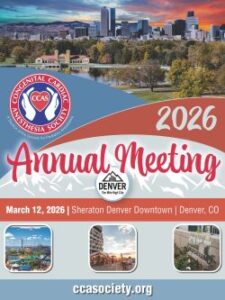Authors: Amy Babb, MD AND Amanpreet Kalsi, MBBS, FRCA - Vanderbilt University Medical Center - Monroe Carell Jr. Children's Hospital at Vanderbilt
A 1-year-old patient is diagnosed with congenitally corrected transposition of the great arteries (cc-TGA) with intact ventricular septum and no pulmonary stenosis. Which of the following is the MOST appropriate initial surgical strategy with the end-goal of complete anatomic correction?
EXPLANATION
Congenitally corrected transposition of the great arteries (cc-TGA) or L-TGA is defined by the presence of both atrioventricular and ventriculoarterial discordance secondary to abnormal looping of the ventricles during embryologic development. The abnormal looping results in normally positioned atria, with the morphologic left ventricle (LV) in the subpulmonary position and the morphologic right ventricle (RV) in the subaortic position. The great vessels are L-looped with the aorta anterior and to the left of the pulmonary artery. Although this results in a physiologically “normal” or “corrected” circulation, it is associated with long-term morbidity and mortality due to failure of the morphologic right ventricle as the systemic ventricle and the development of tricuspid regurgitation.
L-TGA is commonly associated with other cardiac lesions including a ventricular septal defect (VSD), subpulmonary stenosis, an “Ebstein-like” tricuspid valve and conduction system anomalies. Roughly 75% of patients with cc-TGA will have a VSD and require surgical repair. A common approach involves restoring the morphologic LV as the systemic ventricle with a Rastelli approach and an atrial switch.1 When a VSD is present, anatomic correction and VSD closure is predictably tolerated because the LV has been exposed to systemic pressures via the VSD.
Conversely, approximately 25% of patients with cc-TGA have an intact ventricular septum with a variable clinical course, ranging from minimal heart failure symptoms to significant RV dysfunction, tricuspid regurgitation and early death without surgical intervention.2 Unfortunately, it remains difficult to predict which patients will develop heart failure, leading some experts to advocate for early surgical intervention to restore “normal cardiac anatomy”.3 The double switch operation describes one such approach where both an atrial baffle (Senning/Mustard procedures) and arterial switch result in the morphologic left ventricle as the systemic ventricle.1
For the double switch operation to be successful, the morphologic left ventricle must be able to support a full cardiac output with normal systemic vascular resistance. However, the LV of patients born with cc-TGA and intact ventricular septum involutes within a few weeks of life due to the rapidly falling pulmonary vascular resistance, and may become unable to pump against a higher afterload if acutely challenged.3 As a result, the first surgical procedure for these patients should be pulmonary artery (PA) band placement to increase morphologic LV afterload and stimulate muscle growth prior to pursuing a double switch procedure.1-4 Some patients will require multiple PA band titrations before the LV is considered adequate for a double switch procedure.3 Older patients have a lower likelihood of successful LV re-training, but some experts still advocate for PA banding in an effort to preserve tricuspid valve competence,2,4 as the increased afterload to the subpulmonic ventricle creates septal shift, improving the morphological RV geometry.
The double switch operation would not be a successful option in a 1 year-old with cc-TGA and intact ventricular septum due to potential LV “detraining” and a central shunt is not appropriate in a child with biventricular circulation without outflow stenoses or septation defects.
REFERENCES
1. Mainwaring R, Hanley F. Double Switch With Hemi-Mustard and Bidirectional Glenn Procedure for “Anatomical” Repair of Corrected Transposition. Operative Techniques in Thoracic and Cardiovascular Surgery. 2013; 18(3): 171 – 189.
2. Cui H, Hage A, Piekarski B, Marx G, et al. Management of Congenitally Corrected Transposition of the Great Arteries with Intact Ventricular Septum: Anatomic Repair or Palliative Treatment?Circulation: Cardiovascular Interventions. 2021; 14(7): Page e010154.
3. Mac Felmly L, Mainwaring RD, Ho DY, Arunamata A, Algaze C, Hanley FL. Results of the Double Switch Operation in Patients Who Previously Underwent Left Ventricular Retraining.World J Pediatr Congenit Heart Surg. 2024;15(3):279-286. doi:10.1177/21501351231224329
4. Mainwaring R, Patrick W, Arunamata A. et al. Left Ventricular Retraining in Corrected Transposition: Relationship between Pressure and Mass. The Journal of Thoracic and Cardiovascular Surgery. 2020; 159(6): 2356-66.
